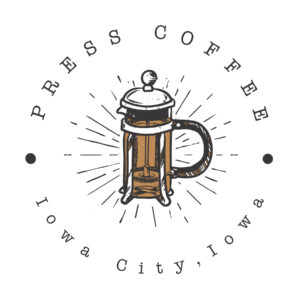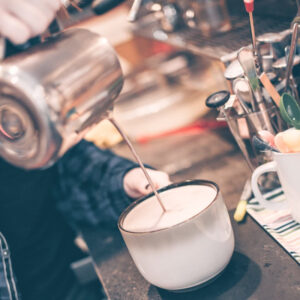A’s for your Q’s: Coffee Alternatives
- Lisa Edwards
- Feb, 17, 2021
- Answers
- Comments Off on A’s for your Q’s: Coffee Alternatives
If you’re signed up for our Pressing Newsletter, you had the chance to partake in a little coffee quiz we sent out last week. At the end of it, we left space for you to submit any questions you have about coffee and will be answering one of those here. To help you become knowledgeable coffee consumers, we decided to leave a form on our contact page for you to ask any questions you might have about the coffee world. We’ll do our best to answer them or find answers for you!
Is your coffee routine in need of a makeover? Maybe it makes you too jittery, or you don’t like the taste, or dietary restrictions are forcing you to find an alternative. Caffeine is not everyone’s best friend and some are more sensitive to it than others. If you’ve been looking for a coffee alternative but are worried about straying blindly into the rest of a cafe menu, we are here to show you the way.
To curb the effects caffeine has on your body, you could start by adjusting your usual order. Each shot of espresso has about 64 milligrams of caffeine making a two-shot latte around 120mg, whereas a 16-ounce cup of brewed coffee has about 200mg. For latte drinkers, simply reducing the number of espresso shots in your latte or ordering it half-caff can help balance things out, and don’t forget the hefty sugar content some specialty drinks carry. Take note that decaffeinated coffees and espressos still carry small amounts of caffeine (up to 16mg) and the only beverages that are truly caffeine-free are those without coffee or espresso in them or herbal tea.
Entering the realm of loose-leaf tea, there are a variety of choices if coffee is too much. One could argue that the darker the tea the higher the caffeine content but it’s always best to read the label first. Black teas such as English breakfast, earl grey, or chai tea are going to be higher in caffeine at around 100mg per 16oz portion.
Ease yourself into the tea world by trying a London Fog: earl grey tea, steamed milk, and vanilla syrup.
White and green teas are milder choices with about 50-60mg of caffeine per 16oz cup. These types are more sensitive and require a shorter brewing time in water that ranges from 150-180 degrees to prevent a bitter end result. At Press Coffee, we get our selection of teas from Gong-Fu Tea in Des Moines and one of their green teas has been by far been the hardest to keep on our shelf. Excellent whether iced or hot, Ancient Happiness is a blend of sencha green tea with sunflower, rose, and cornflower petals. Even decaffeinated teas have trace amounts of caffeine in them so the best way to ensure your tea is caffeine-free is by going herbal. In fact, it’s not even tea at all. Think of it as a holistic path to energy through a variety of herbs, fruit, and flowers.
Green tea lattes hit the menu at Starbucks in 2006 and matcha tea has gained in popularity ever since with its photogenic green hue. Traditionally a ceremonial Japanese tea, it differs from regular green tea in that the leaves are stoneground and mixed with water directly as opposed to being infused. This means it has slightly higher caffeine levels compared to regular green tea, but less than brewed coffee. Nutritionally, green tea lattes (sweetened matcha powder steamed into milk) are almost the same as a vanilla latte but with half the caffeine content. Many people have claimed that matcha has a milder buzz because of the amino acid theanine, which is said to calm anxiety, but more research needs to be done. Another tea that has less caffeine than coffee but is a step up from regular green tea is yerba mate. A customary drink from South America, it contains theobromine which is also found in chocolate and cacao. It is said to have similar effects to caffeine without the jitters since it’s not a central nervous system stimulant. Again, take that claim with a grain of salt
If you’re willing to branch out and try another rising trend, there are many options for kombucha these days. Cafes and grocery stores carry it now or stop by Wild Culture, Iowa City’s own kombucha brewery. This drink consists of tea fermented with sugar and a symbiotic culture of bacteria and yeast (SCOBY). It’s not for everyone, especially if you’ve tried and failed to enjoy apple cider vinegar drinks, but no kombucha drink is exactly the same. Lightly carbonated, it provides similar benefits to tea but has lower levels of caffeine. It can be made with green or black tea and could contain fruit, flowers, spices, or more, making it a versatile option. Kombucha’s true powers are in the acetic acid and probiotic properties which can kill harmful bacteria, aid digestion, and work as an anti-inflammatory.
Okay, this last one I haven’t tried yet, and the name alone makes me cringe. Golden milk is an Indian drink that combines turmeric, cinnamon, ginger, black pepper, and honey with milk. The star of this drink is the curcumin found in turmeric which is claimed to be full of antioxidants as well as anti-inflammatory and mood-boosting powers. I haven’t seen this exact drink on any menus yet but have seen turmeric added to lattes in recent years. Buyer beware: it may stain your vessel yellow.
Finding an alternative morning beverage all depends on how coffee is wreaking havoc on your body. First, take a look at the ingredients and see if adjustments can be made to your milk choice, amount of sugar, or the number of espresso shots. If you need a more dramatic change, try some of the options above depending on your tastes, and do your research. Everyone is different and many of the health claims surrounding these drinks are up for debate. However, I would not recommend smoking coffee.

Pressing Newsletter
Send a Digital Gift Card!
Social
Find us online:
Facebook
Instagram:
@PressCoffee_ic
@PupsofPress
TikTok
Yelp
Order through the Joe Coffee app!
FOMO?
FAQ?
Pressing Newsletter
Social
Find us online:
Facebook
Instagram:
@PressCoffee_ic
@PupsofPress
TikTok
Yelp
Order through the Joe Coffee app!



